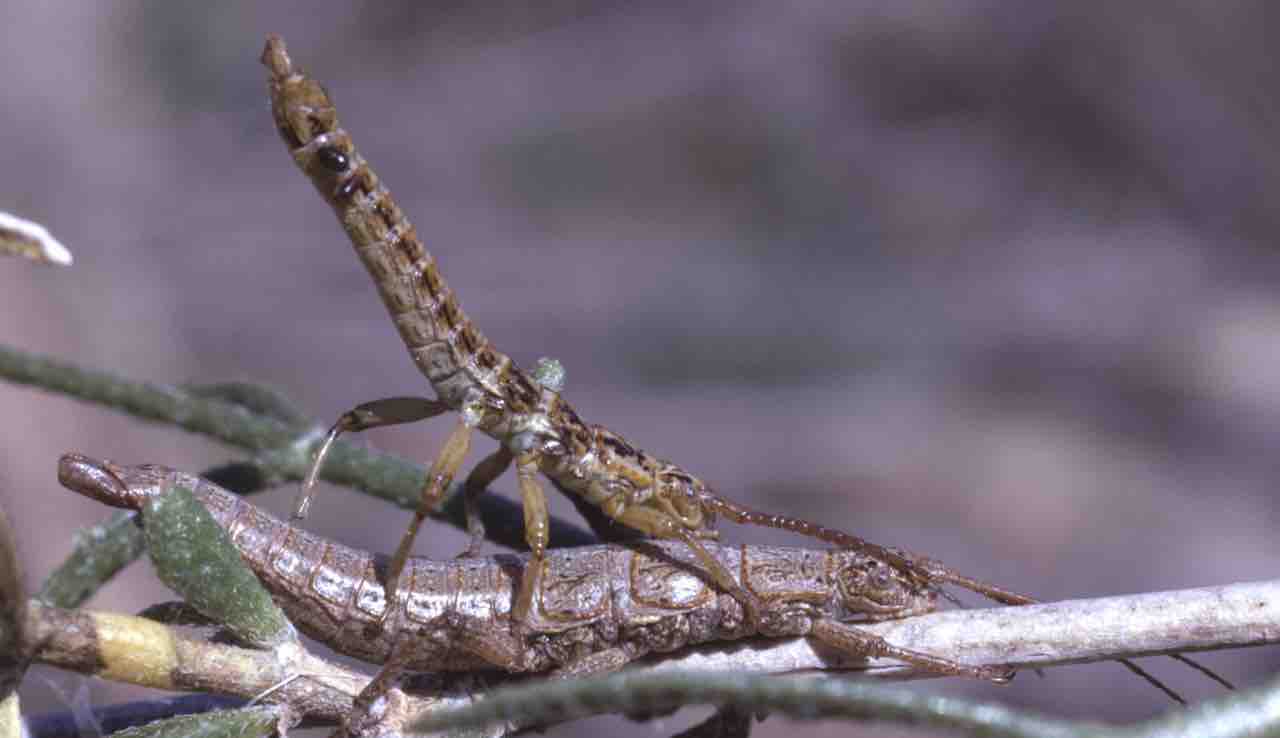Timema Discovery Project
"Answering Big Questions
by Studying Small Insects"
What can you do to help?

You can do a LOT to help, actually, which is why this Project and website were initiated! You see, a lot of research has already been done, or at least begun, and most of what is still needed to advance this research is simply to obtain more specimens, from more places. That really, truly, can make a HUGE difference! A handful of scientists, most of whom do not live in the US, are not in a good position to visit hundreds upon hundreds of different locations, covering tens of thousands of square miles, mostly in the mountains. That just isn't practical, and that limits what questions we can ask, and how well we can answer those questions. That's where YOU come in. We can use photos, but more than that, we can use fresh specimens.
Timemas don't fly, they don't bite, and they don't even move quickly. As such, they are about the easiest insects to collect that you can imagine; you can just walk up to a plant they are feeding on, and gently remove them and preserve them. There really isn't a lot more to it, so this is a chance for willing volunteers to give scientists a great deal of help for very little effort. All it really requires is three things:
We will discuss these three steps in some detail on the next page, but there is one thing we absolutely need to make very clear first:
IS IT REALLY NECESSARY TO KILL THEM IN ORDER TO STUDY THEM?
The short answer is yes, because there is at present no practical way to take DNA samples from large numbers of insects without killing them, and virtually all of the research hinges upon having DNA that we can work with. Specimens are also an absolute necessity for the description and vouchering of new species. That does NOT mean, however, that we cannot encourage responsible, humane, and ethical sampling of specimens, as follows: (1) we ask that volunteers remove NO MORE than 3 pairs of mating male and female timemas that they find on any single individual plant (2) we ask that volunteers remove timemas from NO MORE than 2 or 3 individual plants of the same plant species, if the plants are within roughly a quarter mile of one another (3) we ask that volunteers ONLY take small snippets of plant material, so as not to inflict significant injury on any of the host plants (4) we ask that volunteers ONLY kill timemas by placing them into a freezer, as this is the most humane method for doing so (5) we ask that volunteers remove NO specimens at all from plants on private property without the explicit permission of the owner of that property (6) we ask that volunteers remove NO specimens at all from plants on government property without the proper legal permission required for that property (e.g., collecting permits for State Parks, National Parks, and National Monuments; National Forests typically allow "recreational collecting" by members of the public). We are firmly committed to performing science in such a way as to minimize any harm to the organisms we study, the populations they come from, or to violate any private or public laws governing the areas they are found, and we only wish to enlist the help of volunteers who support and adhere to these principles.
WHAT IF I REALLY DON'T WANT TO KILL ANYTHING?
We definitely understand that some people who might be willing and interested in helping advance science might not be willing to kill insects to do so; while this greatly limits the potential for contribution, it doesn't entirely eliminate it. To a limited extent, photographic evidence CAN be used for certain purposes, especially if the photo is detailed enough to allow for a positive species ID (some species, though definitely not all, can be IDed from good photos, especially of males); specifically, photos can give data on spatial occurrence of a species, data on phenology (what time of year a species is active), and evidence for host plant associations. Especially if you are in a time and place that no one else has been, then yours could be very valuable data points, and potentially could be incorporated into the larger research project. For another example, if you are in a National or State Park where you do not have legal permission to collect specimens, then it is possible that photographs will be the only tool you would have to gather and submit ANY data, and photo data are certainly better than no data at all! As such, we welcome contributions of high-quality photos, as long as they come with accurate georeferencing and a specific date.
HOW CAN I PARTICIPATE?
Just click HERE for instructions.Content last updated March 2018